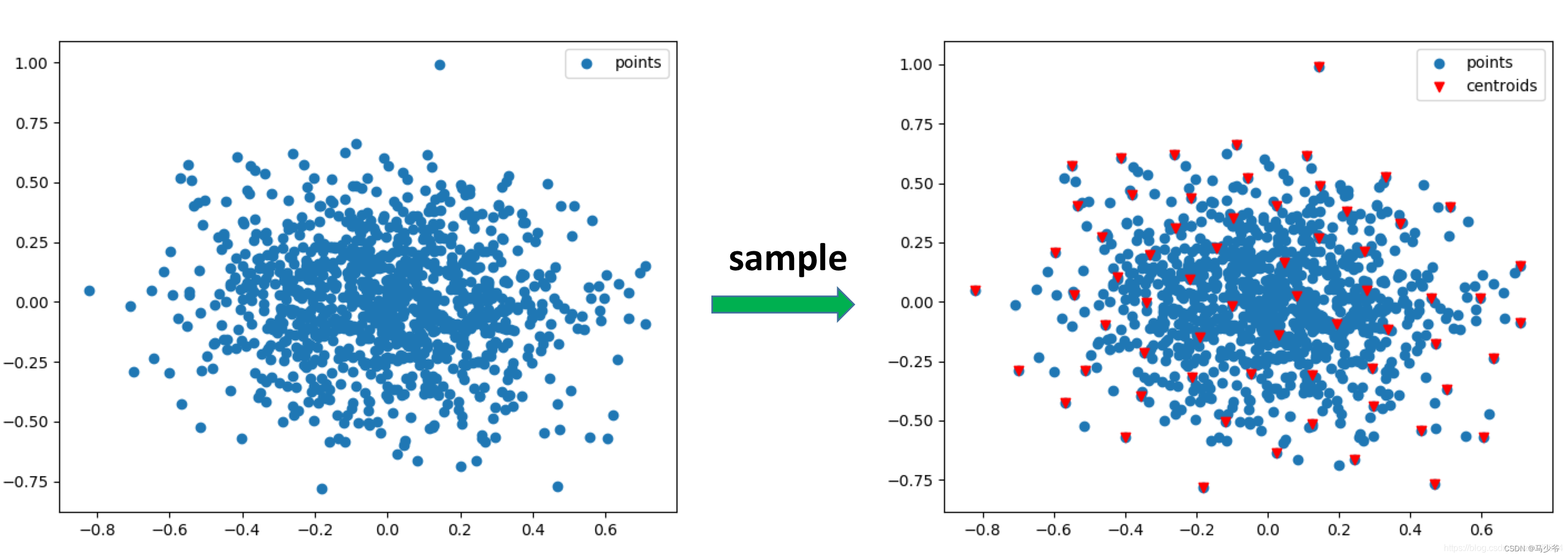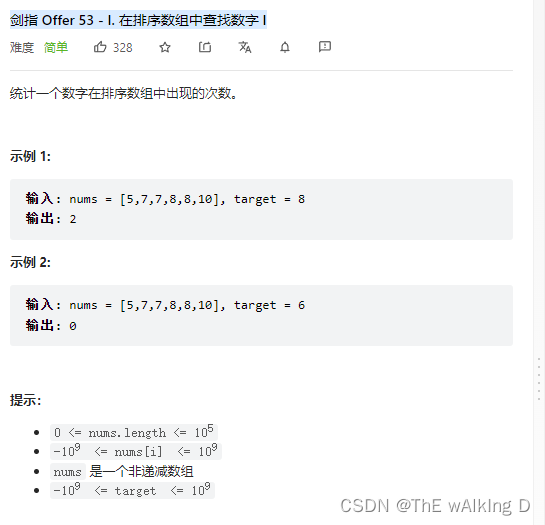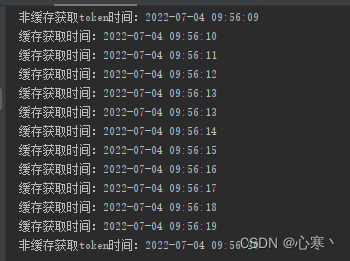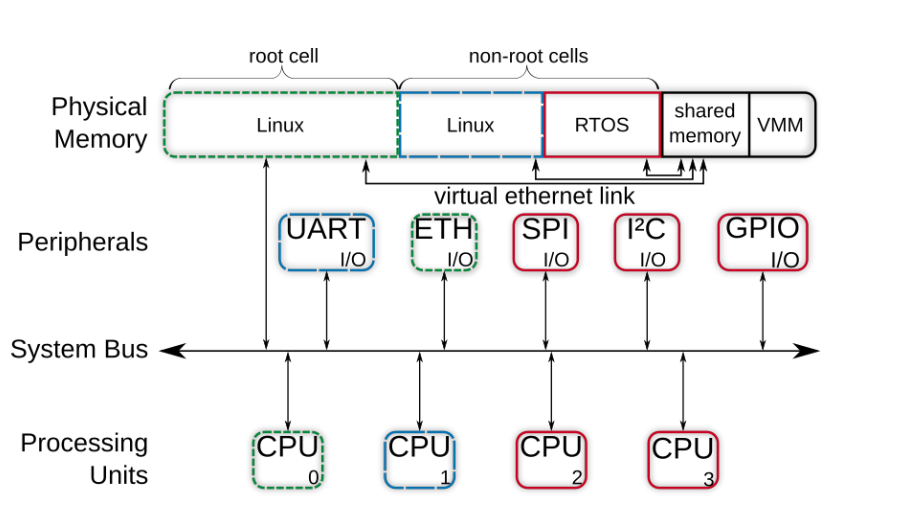当前位置:网站首页>Kubedm series-00-overview
Kubedm series-00-overview
2022-07-05 05:30:00 【runzhliu】
List of articles
Overview
Kubernetes 1.24 Is officially abandoned
Dockershim Version of , This article mainly describes the installation Kubernetes 1.24 + containerd 1.6.6 As CRI The cluster of , It is mainly installed in the way of package manager , The installation process can also be referred to Official documents
| Software | edition | other |
|---|---|---|
| kubernetes | 1.24.1 | |
| containerd | 1.6.6 | |
| runc | 1.1.2 | |
| Centos | 8 Stream | |
| kernel | 5.18.5-1.el8.elrepo.x86_64 |
To configure yum repo file
stay 1.24 Version of , When installing, you may encounter this strange problem , gpgcheck=0 repo_gpgcheck=0 Just turn off these two parameters
cat <<EOF | sudo tee /etc/yum.repos.d/kubernetes.repo [kubernetes] name=Kubernetes baseurl=https://packages.cloud.google.com/yum/repos/kubernetes-el7-\$basearch enabled=1 gpgcheck=0 repo_gpgcheck=0 gpgkey=https://packages.cloud.google.com/yum/doc/yum-key.gpg https://packages.cloud.google.com/yum/doc/rpm-package-key.gpg exclude=kubelet kubeadm kubectl EOF
# Domestic sources can also
cat <<EOF | sudo tee /etc/yum.repos.d/kubernetes.repo [kubernetes] name=Kubernetes baseurl=http://mirrors.aliyun.com/kubernetes/yum/repos/kubernetes-el7-x86_64 enabled=1 gpgcheck=0 repo_gpgcheck=0 gpgkey=http://mirrors.aliyun.com/kubernetes/yum/doc/yum-key.gpg http://mirrors.aliyun.com/kubernetes/yum/doc/rpm-package-key.gpg EOF
Configuration of machine initialization
If it is a public cloud , These configurations may be related to some software and images of the public cloud's own machine and system initialization , So the following commands are not not always 100% whole
, Of course , If you lack any software or configuration , Carry out later kubeadm init You'll find out
# Set SELinux in permissive mode (effectively disabling it)
sudo setenforce 0
sudo sed -i 's/^SELINUX=enforcing$/SELINUX=permissive/' /etc/selinux/config
# Turn off firewall
systemctl stop firewalld && systemctl disable firewalld
sysctl -w net.ipv4.ip_forward=1
echo 1 > /proc/sys/net/bridge/bridge-nf-call-iptables
echo 1 > /proc/sys/net/ipv4/ip_forward
# Loading kernel modules
modprobe br_netfilter
modprobe overlay
# Time synchronization
yum install ntpdate -y
# Easy to check ipvs The problem of
yum install -y ipset ipvsadm
Software dependency
If no version is specified , With yum install kubeadm The operation of , The default is to find the latest , Therefore, it is recommended to install the specified version according to the following command
# install 1.24.1
sudo yum install -y kubelet-1.24.1-0 kubeadm-1.24.1-0 kubectl-1.24.1-0 --disableexcludes=kubernetes
# install 1.21.7
sudo yum install -y kubelet-1.21.7-0 kubeadm-1.21.7-0 kubectl-1.21.7-0 --disableexcludes=kubernetes
# Delete 1.24.1
sudo yum remove -y kubelet-1.24.1-0 kubeadm-1.24.1-0 kubectl-1.24.1-0 --disableexcludes=kubernetes
# Delete 1.21.7
sudo yum remove -y kubelet-1.21.7-0 kubeadm-1.21.7-0 kubectl-1.21.7-0 --disableexcludes=kubernetes
in addition , As a dependency , In the installation kubelet/kubeadm/kubectl When , The following software will also be installed , You also need to pay attention to the version , Don't have too big version differences , If it is installed in the way of package manager , Generally, these software versions correspond well
cri-tools.x86_64 0:1.24.0-0
kubernetes-cni.x86_64 0:0.8.7-0
socat.x86_64 0:1.7.3.2-2.el7
kubelet.service
Check it out. kubelet.service File structure , More common , But you need to know ,kubeadm Initialized cluster , The default is to use the kubelet As service To deploy , Unlike other components kube-apiserver/etcd In that way Static Pod Form operation
cat /etc/systemd/system/multi-user.target.wants/kubelet.service
[Unit]
Description=kubelet: The Kubernetes Node Agent
Documentation=https://kubernetes.io/docs/
Wants=network-online.target
After=network-online.target
[Service]
ExecStart=/usr/bin/kubelet
Restart=always
StartLimitInterval=0
RestartSec=10
[Install]
WantedBy=multi-user.target
kubeadm init
actually kubeadm init Will do a lot of configuration checks , For example, it will check cri runtime What is it? Wait a minute , Or set the host name
# Set host name
hostnamectl set-hostname master
Mirror image problem
In the domestic public cloud environment , Image download stuck , In fact, you can execute the following command to confirm , If ps -ef Take a look , The following process cannot be mirrored in China , So think about the configuration
kubeadm config images pull --kubernetes-version 1.24.1
# use crictl download
/usr/bin/crictl -r unix:///var/run/containerd/containerd.sock pull k8s.gcr.io/kube-apiserver:v1.24.1
Containerd Common configuration of
# Two must be replaced endpoint, This operation can also be modified directly kubeadm Initialization profile for
crictl config runtime-endpoint unix:///run/containerd/containerd.sock
crictl config image-endpoint unix:///run/containerd/containerd.sock
# Test it
crictl pull docker.io/library/redis:alpine3.13
# Replace it with a domestic image
Look at the mirror image
Be careful ctr To view the image, you need to bring namespace Of
ctr --namespace k8s.io images list
Make this problem to the extent that the business has to solve
If there is any problem during the installation , please Look carefully kube init The following command output , The other is to check kubelet as well as containerd Logs of these two services , The following are the possible troubleshooting commands
journalctl -xeu containerd --no-page -f
journalctl -xeu kubelet --no-page -f
Modify the certificate
We can refer to post
perform
In the face of kubeadm In the analysis , The author mainly refers to two major editions , Namely Kubernetes 1.21.7 as well as Kubernetes 1.24.1, Old irons are reading , If in doubt , You can download these two versions of code for reference , If not specially marked , Generally speaking, it means Kubernetes 1.24.1 Code for
Below kubeadm init Log , Some personal information is omitted , And added some step notes , Relevant information can also be obtained through kubeadm init --help Command to print out
# Created k8s edition
[init] Using Kubernetes version: v1.24.1
# Enter from here preflight The stage of
[preflight] Running pre-flight checks
[WARNING SystemVerification]: missing optional cgroups: blkio
[preflight] Pulling images required for setting up a Kubernetes cluster
[preflight] This might take a minute or two, depending on the speed of your internet connection
[preflight] You can also perform this action in beforehand using 'kubeadm config images pull'
# Enter the certificate stage from here
[certs] Using certificateDir folder "/etc/kubernetes/pki"
[certs] Generating "ca" certificate and key
[certs] Generating "apiserver" certificate and key
[certs] apiserver serving cert is signed for DNS names [ip-172-31-90-126 kubernetes kubernetes.default kubernetes.default.svc kubernetes.default.svc.cluster.local] and IPs [10.96.0.1 172.31.90.126]
[certs] Generating "apiserver-kubelet-client" certificate and key
[certs] Generating "front-proxy-ca" certificate and key
[certs] Generating "front-proxy-client" certificate and key
[certs] Generating "etcd/ca" certificate and key
[certs] Generating "etcd/server" certificate and key
[certs] etcd/server serving cert is signed for DNS names [ip-172-31-90-126 localhost] and IPs [172.31.90.126 127.0.0.1 ::1]
[certs] Generating "etcd/peer" certificate and key
[certs] etcd/peer serving cert is signed for DNS names [ip-172-31-90-126 localhost] and IPs [172.31.90.126 127.0.0.1 ::1]
[certs] Generating "etcd/healthcheck-client" certificate and key
[certs] Generating "apiserver-etcd-client" certificate and key
[certs] Generating "sa" key and public key
# Get into kubeconfig The stage of
[kubeconfig] Using kubeconfig folder "/etc/kubernetes"
[kubeconfig] Writing "admin.conf" kubeconfig file
[kubeconfig] Writing "kubelet.conf" kubeconfig file
[kubeconfig] Writing "controller-manager.conf" kubeconfig file
[kubeconfig] Writing "scheduler.conf" kubeconfig file
# To start kubelet
[kubelet-start] Writing kubelet environment file with flags to file "/var/lib/kubelet/kubeadm-flags.env"
[kubelet-start] Writing kubelet configuration to file "/var/lib/kubelet/config.yaml"
[kubelet-start] Starting the kubelet
# Start controlplane The start-up phase
[control-plane] Using manifest folder "/etc/kubernetes/manifests"
[control-plane] Creating static Pod manifest for "kube-apiserver"
[control-plane] Creating static Pod manifest for "kube-controller-manager"
[control-plane] Creating static Pod manifest for "kube-scheduler"
[etcd] Creating static Pod manifest for local etcd in "/etc/kubernetes/manifests"
[wait-control-plane] Waiting for the kubelet to boot up the control plane as static Pods from directory "/etc/kubernetes/manifests". This can take up to 4m0s
# health examination
[apiclient] All control plane components are healthy after 16.503764 seconds
[upload-config] Storing the configuration used in ConfigMap "kubeadm-config" in the "kube-system" Namespace
[kubelet] Creating a ConfigMap "kubelet-config" in namespace kube-system with the configuration for the kubelets in the cluster
[upload-certs] Skipping phase. Please see --upload-certs
# to controlplane Put on the necessary label
[mark-control-plane] Marking the node ip-172-31-90-126 as control-plane by adding the labels: [node-role.kubernetes.io/control-plane node.kubernetes.io/exclude-from-external-load-balancers]
[mark-control-plane] Marking the node ip-172-31-90-126 as control-plane by adding the taints [node-role.kubernetes.io/master:NoSchedule node-role.kubernetes.io/control-plane:NoSchedule]
# establish token
[bootstrap-token] Using token: qlk4br.83yi47aqacj3cwzh
[bootstrap-token] Configuring bootstrap tokens, cluster-info ConfigMap, RBAC Roles
[bootstrap-token] Configured RBAC rules to allow Node Bootstrap tokens to get nodes
[bootstrap-token] Configured RBAC rules to allow Node Bootstrap tokens to post CSRs in order for nodes to get long term certificate credentials
[bootstrap-token] Configured RBAC rules to allow the csrapprover controller automatically approve CSRs from a Node Bootstrap Token
[bootstrap-token] Configured RBAC rules to allow certificate rotation for all node client certificates in the cluster
[bootstrap-token] Creating the "cluster-info" ConfigMap in the "kube-public" namespace
[kubelet-finalize] Updating "/etc/kubernetes/kubelet.conf" to point to a rotatable kubelet client certificate and key
# The stage of plug-in installation
[addons] Applied essential addon: CoreDNS
[addons] Applied essential addon: kube-proxy
The following is the log of successful installation after the above process , Will prompt you to kubeconig Configure it
Your Kubernetes control-plane has initialized successfully!
To start using your cluster, you need to run the following as a regular user:
mkdir -p $HOME/.kube
sudo cp -i /etc/kubernetes/admin.conf $HOME/.kube/config
sudo chown $(id -u):$(id -g) $HOME/.kube/config
Alternatively, if you are the root user, you can run:
export KUBECONFIG=/etc/kubernetes/admin.conf
You should now deploy a pod network to the cluster.
Run "kubectl apply -f [podnetwork].yaml" with one of the options listed at:
https://kubernetes.io/docs/concepts/cluster-administration/addons/
Then you can join any number of worker nodes by running the following on each as root:
kubeadm join 172.31.90.126:6443 --token qlk4br.83yi47aqacj3cwzh \
--discovery-token-ca-cert-hash sha256:cc121a0e581abbdedcbad370077c46e11da9d6ea60a201dd54be4c70893f98f4
In fact, for kubeadm The understanding of the , I think so , He did a lot of scripted work , Thanks to go Relatively rich toolkits bound to the system , So it will be very convenient to call , The other is to use actually , All these inspections and installation work , Using scripts shell And the like can also be written well , Actually, I used to do Kubernetes 1.8 And previous versions , Deployment is done with scripts written by operation and maintenance , There is not much difference in essence , But with go To write , You can add some scalability and robustness , This is something considered from the grammatical level
边栏推荐
- Chapter 6 data flow modeling - after class exercises
- Haut OJ 2021 freshmen week II reflection summary
- GBase数据库助力湾区数字金融发展
- 剑指 Offer 06.从头到尾打印链表
- 使用Electron开发桌面应用
- The number of enclaves
- [to be continued] [UE4 notes] L3 import resources and project migration
- room数据库的使用
- 【ES实战】ES上的native realm安全方式使用
- Haut OJ 1357: lunch question (I) -- high precision multiplication
猜你喜欢

Pointnet++ learning

挂起等待锁 vs 自旋锁(两者的使用场合)

Sword finger offer 53 - I. find the number I in the sorted array

利用HashMap实现简单缓存

lxml.etree.XMLSyntaxError: Opening and ending tag mismatch: meta line 6 and head, line 8, column 8

剑指 Offer 58 - II. 左旋转字符串

第六章 数据流建模—课后习题

【Jailhouse 文章】Look Mum, no VM Exits
![[turn to] MySQL operation practice (III): table connection](/img/70/20bf9b379ce58761bae9955982a158.png)
[turn to] MySQL operation practice (III): table connection
![[turn]: OSGi specification in simple terms](/img/54/d73a8d3e375dfe430c2eca39617b9c.png)
[turn]: OSGi specification in simple terms
随机推荐
第六章 数据流建模—课后习题
Introduction to tools in TF-A
Improvement of pointnet++
Web APIs DOM node
26、 File system API (device sharing between applications; directory and file API)
剑指 Offer 53 - II. 0~n-1中缺失的数字
Haut OJ 1347: addition of choice -- high progress addition
剑指 Offer 06.从头到尾打印链表
Haut OJ 1245: large factorial of CDs --- high precision factorial
剑指 Offer 05. 替换空格
Summary of Haut OJ 2021 freshman week
[allocation problem] 135 Distribute candy
Double pointer Foundation
YOLOv5添加注意力机制
After setting up the database and website When you open the app for testing, it shows that the server is being maintained
A problem and solution of recording QT memory leakage
卷积神经网络简介
room数据库的使用
[turn to] MySQL operation practice (III): table connection
Reflection summary of Haut OJ freshmen on Wednesday